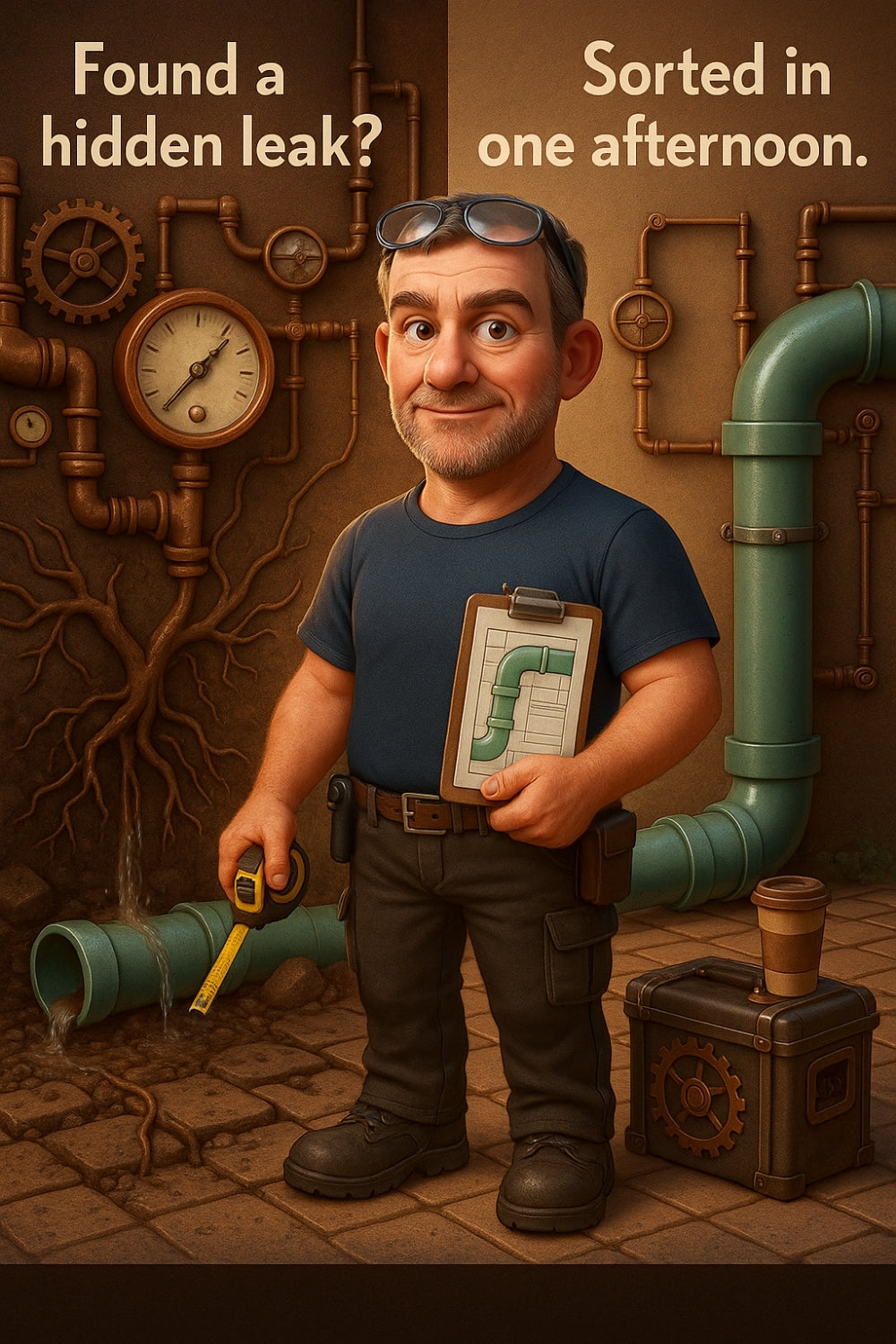
Holman fittings in hand—if your pipes are leaking, you're bleeding value without knowing it.
Share
Leaking stormwater pipe? Here’s what every smart reno needs to fix it fast.
Primary keyword: stormwater pipe repair
Complementary keywords: how to fix broken stormwater pipe, stormwater pipe replacement
Why speed (and knowing where to dig) matters more than you think
If you’ve ever pulled up pavers only to discover rushing water and compacted sog, you know fixing a broken stormwater pipe isn’t just about plumbing—it’s about protecting hard-earned street appeal and property value. Left alone, even a small crack can create sinkholes, rot footings, and turn “ready to list” into “back on hold.”
One client had six viewings lined up for Monday. Pipe burst Friday. We helped him patch it in 3.5 hours using Holman 90mm PVC fittings. He didn’t miss a beat.
Step-by-step: how to repair a broken stormwater pipe — the clean way
Step 1: Confirm the leak
Look for soft ground, moss where it shouldn’t be, or pooling after rain. If you’ve got discoloured concrete, it may be seeping underneath from a long-standing crack.
Step 2: Dig with purpose
Start about 30cm on each side of the leak. Use a trenching shovel or narrow spade to protect nearby pipes and cabling. Take it slow—the last thing you want is turning one leak into two.
Step 3: Cut out the damaged section
Use a small-tooth PVC saw to remove the broken piece, trimming cleanly on both ends. Make the cuts straight, smooth and burr-free. A rough cut can stop slip couplings from properly sealing.
Step 4: Dry-fit the new fittings
Here’s where the magic happens. Select your new pieces based on what you're replacing:
- Slip Couplings – for a straight-line fix.
- Bends or Elbows – if your old pipe was laid on an angle or around obstacles.
- Reducers – when old and new diameters don’t match.
- Junctions or Tees – for joining multiple pipes at a single point.
Holman’s stormwater fittings are made from high-quality recycled PVC and meet AS/NZS1254 standards. They’re strong, lightweight, and click into place cleanly—ideal whether the pipe’s buried or exposed.

Step 5: Solvent cement for a sealed finish
Use a heavy-duty PVC solvent cement and primer that's approved for stormwater systems. Apply to both pipe ends and fittings. Push and twist the pieces together and hold for 30 seconds. Let it cure for 24 hours before running water through the line.
“Most stormwater pipe failures I see could’ve been prevented by better joints. Use proper fittings, never just glue and guess.”
— Candeece, Head of DIY Resources
Pro tips from the ground
- Tape your cuts — use painter’s tape as a guide before cutting your pipe to keep a straight edge.
- Get the slope right — aim for a minimum fall of about 1:100 for proper water flow. That’s 1cm drop per metre of pipe.
- Backfill slowly — tamp the soil in layers, pipelining with sand before re-covering with dirt or road base. Quick backfill = cracked glue seals.
The old way: wait for trades. The new way: one afternoon with the right gear.
Replacing even a metre of stormwater pipe used to mean three phone calls, two days’ delay, and a trades invoice. Now? With the right Holman fittings, some primer and cement, most fixes are done before lunch.
We keep a full range of 90mm and 75mm elbows, joints, reducers, and tees ready to go — because when you're racing time and weather, the last thing you want is running around for parts.
Is it time to upgrade instead of just patch?
If a pipe’s cracked in one place, there’s a good chance others are close behind—especially if the runs are older than 15 years or buried under root-heavy zones. It might be smarter to replace several metres in one go using solvent weld pipe and high-strength fittings rather than returning for fix after fix. Ask your local hardware rep if a short job now could prevent a bigger issue later.
What this really means for your project
Whether you're prepping for an open home or just hate water pooling near the back shed, fixing a stormwater pipe isn’t just “wet work”—it's value protection. Done right, it's a one-off job that lets you move on with the bigger stuff: paving, landscaping, and finishing the next flip ahead of schedule.
Dig quicker, fix smarter, and finish knowing it’s sealed tight for the next 20 years. That’s the kind of problem-solving you only get when your gear and advice come from people who’ve seen how stormwater turns from trickle to trouble in one wet weekend.
Happy fixing,
Candeece

Stay Connected
Follow our Facebook Page: Strathalbyn H Hardware on Facebook


